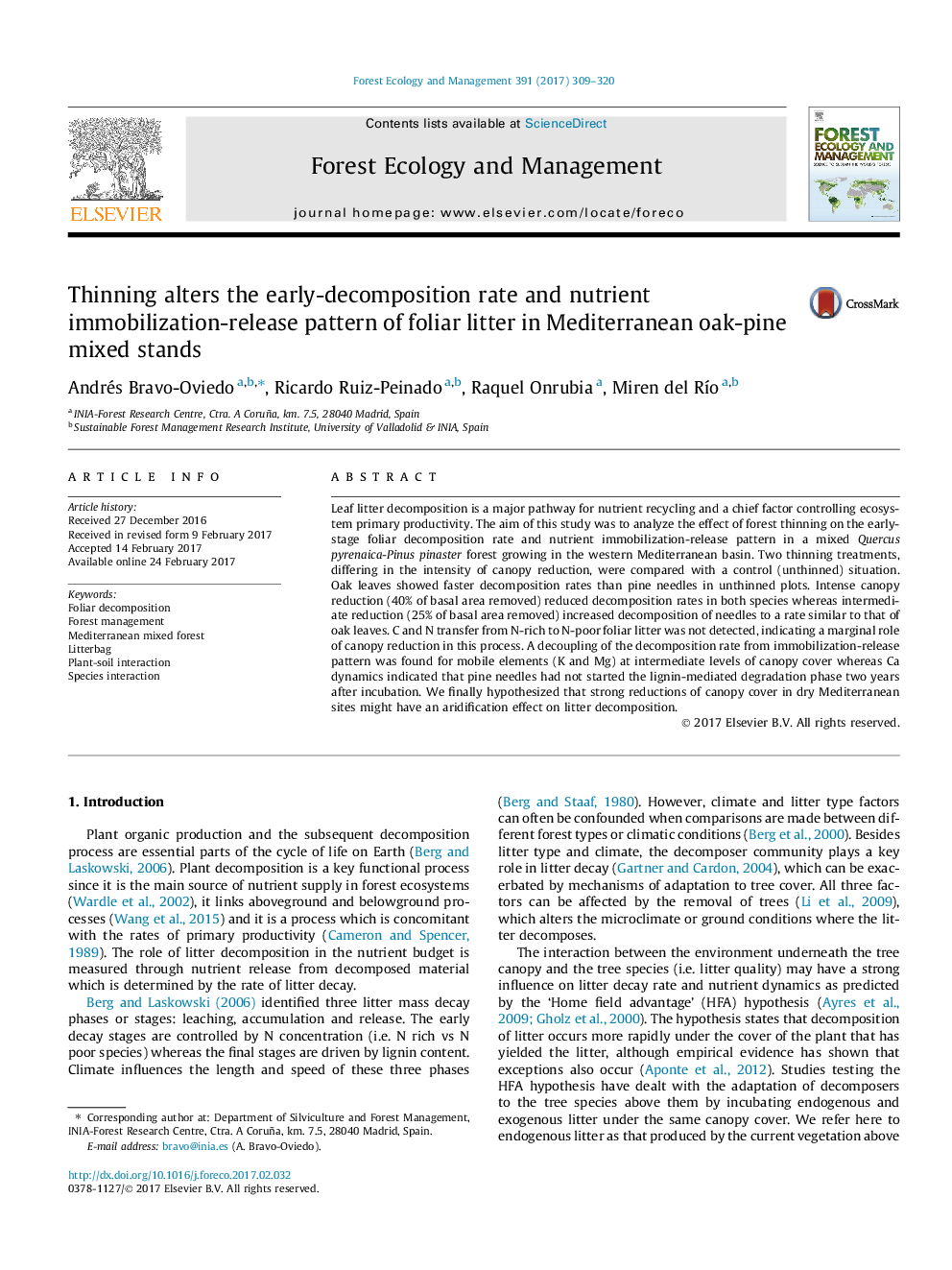| Article ID | Journal | Published Year | Pages | File Type |
|---|---|---|---|---|
| 6459459 | Forest Ecology and Management | 2017 | 12 Pages |
â¢Foliar decay rates were species-specific in unmanaged plots of Mediterranean mixed-oak pine.â¢Thinning reduces the decay rate of oak leaves.â¢C concentration was not affected by thinning, whereas heavy thinning reduced N and P concentration.â¢Heavy thinning of Mediterranean sites might have an aridification effect negatively affecting the decomposition process.
Leaf litter decomposition is a major pathway for nutrient recycling and a chief factor controlling ecosystem primary productivity. The aim of this study was to analyze the effect of forest thinning on the early-stage foliar decomposition rate and nutrient immobilization-release pattern in a mixed Quercus pyrenaica-Pinus pinaster forest growing in the western Mediterranean basin. Two thinning treatments, differing in the intensity of canopy reduction, were compared with a control (unthinned) situation. Oak leaves showed faster decomposition rates than pine needles in unthinned plots. Intense canopy reduction (40% of basal area removed) reduced decomposition rates in both species whereas intermediate reduction (25% of basal area removed) increased decomposition of needles to a rate similar to that of oak leaves. C and N transfer from N-rich to N-poor foliar litter was not detected, indicating a marginal role of canopy reduction in this process. A decoupling of the decomposition rate from immobilization-release pattern was found for mobile elements (K and Mg) at intermediate levels of canopy cover whereas Ca dynamics indicated that pine needles had not started the lignin-mediated degradation phase two years after incubation. We finally hypothesized that strong reductions of canopy cover in dry Mediterranean sites might have an aridification effect on litter decomposition.
